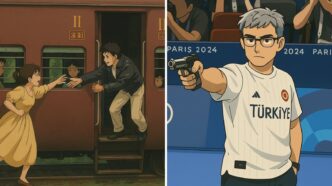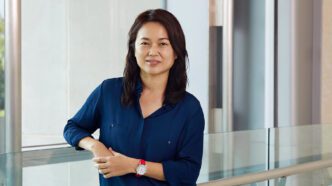Last week, the controversy surrounding AI-generated art in the style of Studio Ghibli sparked widespread outrage, particularly among the studio’s founder. This incident has raised serious concerns about the application of intellectual property (IP) law in the age of artificial intelligence, revealing the unsettling reality that AI can now duplicate, alter, and distribute artworks without facing legal consequences. If AI can replicate an artist’s work — particularly one as culturally significant and iconic as Studio Ghibli’s — without repercussion, it suggests that we may have crossed a critical boundary, one that threatens the very essence of creative ownership.
At the heart of this debate lies a fundamental question: How do current IP laws protect human creativity, and what happens when AI becomes involved?
The Original Intent of Copyright Law
Copyright law has always been designed to protect creators’ rights, preventing the unauthorized reproduction or distribution of their work. Under the Berne Convention for the Protection of Literary and Artistic Works (revised in 1971), original works of authorship—such as films, designs, and illustrations—are automatically protected once created. This means that the painstaking artistry behind Studio Ghibli’s films is shielded from unauthorized copying, preserving the studio’s right to control how its creations are used.
However, this protection was conceived with human creators in mind, not with machines that can be trained on vast amounts of existing art and then churn out similar works at lightning speed. While Ghibli’s films, full of intricate illustrations, enjoy copyright protection, AI models trained on these works can generate images that closely resemble Ghibli’s style without copying a single frame. In essence, an AI might produce art that “looks like” Studio Ghibli’s creations, without directly infringing upon a specific image.
This creates a legal gray area. AI companies argue that since their generated works are not direct reproductions, they don’t violate copyright law. Yet, this legal loophole disregards the fundamental principle of IP protection, which is to safeguard the original creators’ efforts and the recognition they deserve for their work.
AI’s Exploitation of Loopholes in IP Law
One of the most concerning aspects of AI-generated art is that while individual works are protected under copyright, the artistic “style” itself is not. This means that AI companies can legally train their models on copyrighted works like those of Studio Ghibli, generating art that mimics the Ghibli aesthetic. From a legal standpoint, these actions are often seen as harmless, as long as no specific image is directly copied.
But this technicality fails to address the spirit of intellectual property law, which exists to prevent others from exploiting the time, effort, and originality invested by creators. The process by which AI learns to generate these artworks is itself a cause for concern. AI companies frequently use massive datasets scraped from the internet, often without permission from the original creators. The justification often cited is “fair use,” but this is not an absolute right. It depends on factors like how much of the work is used, the purpose behind the use, and its impact on the original market.
AI-generated art, especially when used for commercial purposes, might not qualify as fair use. If these AI works compete with Ghibli’s original art in the marketplace, they could undermine the economic value of the studio’s creations.
Mimicry and Market Consequences
In practical terms, the ability of AI to generate Ghibli-like artwork without the need for skilled animators or illustrators has significant economic implications. If these AI models can create works that mimic Ghibli’s aesthetic, companies can avoid hiring artists who specialize in that style. This erodes the value of Studio Ghibli’s brand and threatens the livelihoods of the human artists who contribute to it.
Legally, this situation mirrors previous cases where courts have ruled against the unauthorized use of copyrighted works that create market competition with the originals. If AI-generated art closely resembles Ghibli’s style and competes with the sale of official Ghibli artwork or related merchandise, it should not be protected under the fair use doctrine.
Consumer Confusion and Trademark Infringement
There’s also a risk of consumer confusion. Studio Ghibli’s unique artistic style is synonymous with its brand identity, cultivated over decades of successful storytelling and animation. When AI-generated art imitates this style, it could mislead consumers into thinking they are engaging with authentic Ghibli content when, in reality, they are not.
This brings trademark law into play. Trademark law protects brand identities, including distinct visual styles that are associated with specific companies. If AI-generated art leads consumers to believe it is associated with Studio Ghibli, this could amount to trademark infringement under the Lanham Act, which aims to prevent the unauthorized use of trademarks that could cause confusion.
However, enforcing these protections in the context of AI is exceedingly difficult. Much of IP law was written long before AI-generated content became a reality, leaving gaps in legal frameworks when it comes to regulating AI-created works that closely resemble human artistry.
The Need for Legislative Reform
Clearly, the current legal framework is ill-equipped to address the complexities of AI-generated art. To close these gaps, some legal experts are calling for reforms. Proposals include requiring AI companies to obtain explicit permission before using copyrighted works in training datasets, establishing clearer rules around the commercial use of AI-generated art, and creating new forms of protection specifically for artistic styles.
The Bigger Picture: AI and the Devaluation of Human Creativity
The Studio Ghibli case is part of a broader debate over the growing role of AI in creative industries. From visual arts to music and literature, AI is increasingly generating content that competes with human-made creations. If left unchecked, this could lead to a future where human creativity is undervalued, and artists lose control over how their work is used.
At its core, intellectual property law is about balance—encouraging creativity while ensuring that creators are compensated fairly. AI has immense potential as a tool for artists, but only if its use is governed by ethical and legal safeguards that respect the rights of human creators. The ability of AI to replicate Studio Ghibli’s style without permission represents a dangerous step toward a future where machines harvest creativity without recognizing or compensating its originators.
If we do not address these concerns now, we risk undermining the very foundations of intellectual property law, ultimately devaluing originality and eroding the incentive for human artists to continue pushing creative boundaries. If we allow AI to copy and tweak any artist’s work freely, we may soon reach a point where originality becomes meaningless.
We stand at a crossroads, and once we cross this line, it may be impossible to return.













